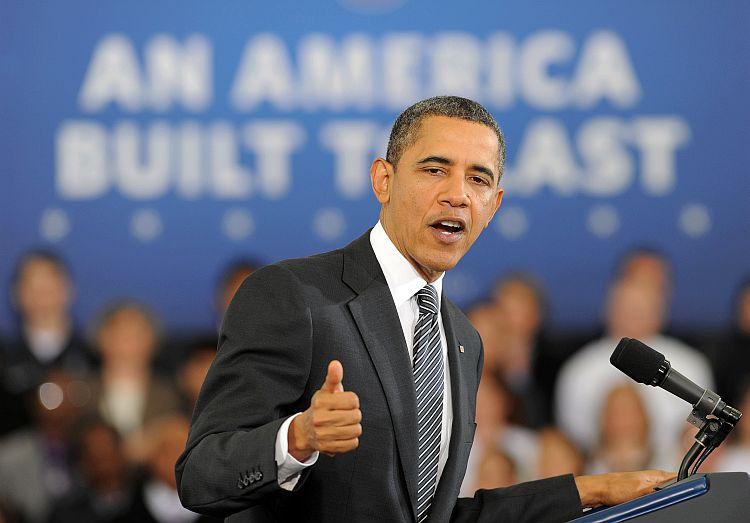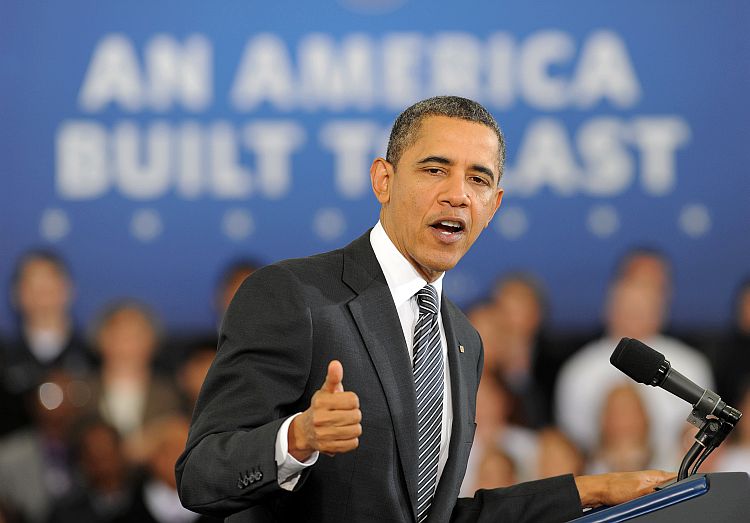President Barack Obama has released his 2013 budget putting in place the priorities he laid out in his State of the Union address while treading a fine line between cuts to reduce the deficit and spending to stimulate economic growth.
“In the State of the Union, I outlined a blueprint for an economy that is built to last—an economy built on new manufacturing, and new sources of energy, and new skills and education for the American people,” the president told some 800 students assembled at a community college in Virginia, Feb 13.
“Today, we’re releasing the details of that blueprint in the form of next year’s budget.”
The president outlined $4 trillion in cuts to the deficit over the next decade seeking to address concerns about the level of American debt.
The United States presently holds a combined public and intra-governmental debt of around $15 trillion, roughly equal to last year’s gross domestic product (GDP) of $15.09 trillion according to U.S. government data.
The president warned that reducing the debt too fast would set back the fragile economic recovery and announced incentives for manufacturing, R&D, technology and clean energy, and extra funding for schools, training, and infrastructure.
“The main idea in the budget is this: At a time when our economy is growing and creating jobs at a faster clip, we’ve got to do everything in our power to keep this recovery on track. Part of our job is to bring down our deficit and if Congress adopts this budget then along with the cuts we’ve already made then we'll be able to reduce out deficit by $4 trillion by the year 2022,” he said.
“By reducing our deficit in the long term, what that allows us to do is to invest in the things that will help grow our economy right now. We can’t cut back on those things that are important for us to grow. We can’t just cut our way in to growth.”
House Budget Committee Chairman Rep Paul Ryan (R-Wis.) released a statement accusing Obama of being irresponsible saying Obama’s budget “spends too much,” “borrows too much,” and “taxes too much”.
“As chairman of the House Budget Committee, I will continue to work with my colleagues—from both parties where possible—to advance bold solutions that lift our crushing burden of debt and ensure a future of opportunity, growth, and prosperity.”
Obama’s budget is intended to take effect Oct. 1, when the federal government’s 2013 fiscal year begins, but it must first gain approval from Congress.
Key features of 2013 Budget
JOBS
• Extension of the payroll tax cut and unemployment insurance benefits for rest of 2012.
• $30 billion to modernize at least 35,000 schools and $30 billion to help states and localities retain and hire teachers and first responders.
• Project Rebuild, a series of policies to help connect Americans looking for work in distressed communities with the work needed to repurpose residential and commercial properties, creating jobs, and stabilizing neighborhoods.
• A new tax credit for this year focused on small businesses and that gives businesses that add jobs and wages a tax cut equal to 10 percent of wages added up to $500,000.
EDUCATION AND SKILLS
• $850 million for Race to the Top, which implements systemic education reforms in five critical areas, including early learning and care. The budget also provides $300 million in new resources to improve child care quality and prepare children for success in school.
• A new $5 billion competitive program that will challenge states and districts to work with their teachers and unions to attract, prepare, and reward great teachers to help students learn.
• Sustains the maximum Pell Grant award through the 2014–2015 award year.
• A one-year measure to prevent student loan interest rates from doubling this summer and doubles the number of work-study jobs.
• Makes permanent the American Opportunity Tax Credit (AOTC)—a partially refundable tax credit worth up to $10,000 per student over four years of college. AOTC helps more than 9 million students and their families afford the cost of college.
INNOVATION AND MANUFACTURING
• $26 million and at least 50 people for a new U.S. panel Trade Enforcement Center to investigate unfair trade practices by nations including China.
• $140.8 billion for R&D overall; increase the level of investment in nondefense R&D by 5 percent from the 2012 level, even as overall budgets decline;
• Doubles the budgets of three key basic research agencies (National Science Foundation, Department of Energy’s Office of Science, and National Institute of Standards and Technology Laboratories); expands and makes permanent the R&D tax credit.
• $2.2 billion for advanced manufacturing R&D, a 19 percent increase over 2012.
• Tax incentives for manufacturers who create jobs here at home and doubles the deduction for advanced manufacturing; ends tax deductions for shipping jobs overseas; and establishes a Manufacturing Communities Tax Credit to encourage investment in communities affected by job loss.
• Elimination of 12 tax breaks to oil, gas, and coal companies.
INFRASTRUCTURE
• A six-year, $476 billion surface transportation reauthorization bill which will to include intercity passenger rail
• National Infrastructure Bank to fund projects of national importance.
• A next-generation, wireless broadband network for public safety users
TAX REFORM
• The expiration of the high-income 2001 and 2003 tax cuts.
• Implements the Buffett Rule that no household making more than $1 million a year pays less than 30 percent of their income in taxes.






